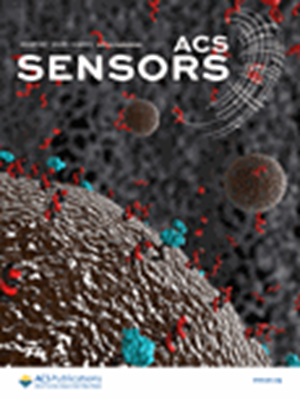Developing Fluorescence-Based Sensors to Support Rare Earth Element Separation
IF 8.2
1区 化学
Q1 CHEMISTRY, ANALYTICAL
引用次数: 0
Abstract
Rare earth elements (REEs) are essential to most renewable energy technologies. Unfortunately, as we transition to sustainable energy production, the demand for REEs rapidly grows well beyond the current rates of production. As a result, novel means of efficient, scalable, and easily adaptable methods for processing primary and recycled feedstocks are needed. Development and integration of sensors for highly selective in-line monitoring can support more efficient design and testing of such novel separation processes as well as more cost-effective deployment of those separation flowsheets. Work here will explore the application of fluorescence spectroscopy, a highly sensitive and selective technique, to quantify multiple lanthanides in complex mixtures, including known interferents or quenching agents. Results include identification of the optimal excitation wavelength and the limit of detection of various rare earth elements, as well as the performance of data-science-based quantification approaches in streams where “unknowns” are present. Overall, the data science tools in conjunction with optical sensor data were able to quantify analytes in the presence of other lanthanides anticipated to be in the actual industrial stream. Here, we include the characterization of lanthanides in a microfluidic device similar to those used in new process development. This study demonstrates the capability of utilizing fluorescence spectroscopy to quantify analytes in a complicated solution matrix, suggesting this as a successful approach for in-line monitoring to optimize the separation efficiency in an industrial stream.

稀土元素 (REE) 是大多数可再生能源技术的基本要素。遗憾的是,随着我们向可持续能源生产过渡,对稀土元素需求的快速增长远远超出了目前的生产速度。因此,我们需要采用高效、可扩展、易适应的新方法来处理初级和回收原料。开发和集成用于高选择性在线监测的传感器,可以更高效地设计和测试此类新型分离工艺,并以更具成本效益的方式部署这些分离流程。这里的工作将探索如何应用荧光光谱这种高灵敏度和高选择性技术来量化复杂混合物(包括已知干扰物或淬灭剂)中的多种镧系元素。研究结果包括确定最佳激发波长和各种稀土元素的检测极限,以及基于数据科学的定量方法在存在 "未知因素 "的溪流中的性能。总体而言,数据科学工具与光学传感器数据相结合,能够对实际工业流中预计存在的其他镧系元素的分析物进行量化。在此,我们将镧系元素在微流控装置中的表征纳入其中,该装置与新工艺开发中使用的装置类似。这项研究证明了利用荧光光谱对复杂溶液基质中的分析物进行定量的能力,表明这是一种成功的在线监测方法,可优化工业流中的分离效率。
本文章由计算机程序翻译,如有差异,请以英文原文为准。
求助全文
约1分钟内获得全文
求助全文
来源期刊

ACS Sensors
Chemical Engineering-Bioengineering
CiteScore
14.50
自引率
3.40%
发文量
372
期刊介绍:
ACS Sensors is a peer-reviewed research journal that focuses on the dissemination of new and original knowledge in the field of sensor science, particularly those that selectively sense chemical or biological species or processes. The journal covers a broad range of topics, including but not limited to biosensors, chemical sensors, gas sensors, intracellular sensors, single molecule sensors, cell chips, and microfluidic devices. It aims to publish articles that address conceptual advances in sensing technology applicable to various types of analytes or application papers that report on the use of existing sensing concepts in new ways or for new analytes.
 求助内容:
求助内容: 应助结果提醒方式:
应助结果提醒方式:


